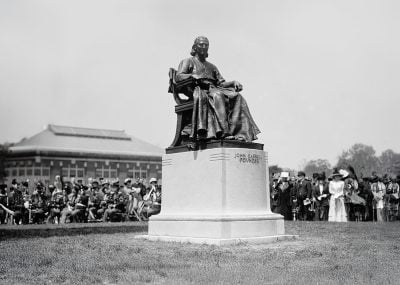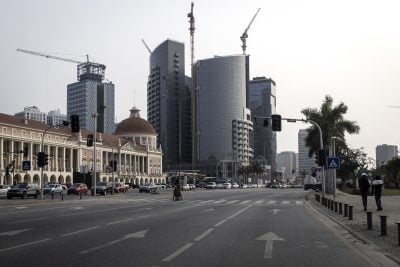Julia Lovell’s study of Maoism has relevance not only for history buffs, but also for those interested in understanding Chinese policy in the current age of US-China superpower tension. Review by Stephen Williams
There are few, if any, politicians of the later half of the 20th century that have had as much impact on the course of world history as Mao Zedong. And there are few, if any, who are as controversial as the Chinese leader. He adopted the mantle of the world leader of a communist revolution that sought the complete overthrow of capitalist systems, while overseeing famine, atrocity and vast upheaval at home.
Mao’s contradictions were startling. Here was a man who saw no irony in famously declared that “women hold up half the sky” while he, in the words of author Julia Lovell “had for years also been indulging his taste for pretty young women, taking advantage of their hero-worship on his vast plank bed…”
Later, Lovell comments, “Mao’s inconsistency towards women speaks of his hypocrisy, his split personality, the chasm between his speech and action – or, put more indulgently, his deep-seated capacity for pragmatism.”
But it would be a mistake to view this book as simply a criticism of Mao’s complex character and radical political ideology. Instead, it is a study of how his contradictions played out on the global stage and influenced actors around the world.
Lovell constructs the book initially in a chronological fashion, beginning with Mao’s consolidation of power within the Chinese Communist Party (CCP). By 1941, Mao was the party’s pre-eminent leader, with an international reputation burnished by a landmark book by Edgar Snow, an American journalist selected by the party to profile Mao in a sympathetic manner. Red Star Over China was a huge success and did much to boost Mao’s international reputation. Lovell describes it as “portraying Mao and his comrades as idealistic patriots and egalitarian democrats with a sense of humour”.
The CCP entered into a pact in 1937 with Chiang Kai-shek’s Nationalist forces to fight the Japanese. But following Japan’s defeat in WWII, China’s civil war began again in earnest in 1945. Unexpectedly, the communists swept to power in 1949, driving Chiang Kai-shek’s forces from the mainland to occupy Taiwan.
Mao consolidated his power within the CCP and instigated a number of purges inspired by the Soviet leader, Joseph Stalin. He intervened in the Korean War and establishing the International Liaison Department, lending support to foreign communist parties and left-wing insurgencies around the world.
After laying down the foundations of Maoism, the author focuses on the different theatres where global revolution was instigated. As well as Indonesia, Vietnam and Cambodia, Western European far-left militant groups like the Baader-Meinhof Gang took inspiration from Maoism as they attacked the political establishment. Lovell focuses on the US, where Maoism influenced radical elements of the anti-Vietnam War movement and civil rights activists such as the Black Panthers.
“For activists in the African-American liberation movement in the late 1960s… Mao’s message seemed almost made for the turbulence of black militancy that gained traction after the assassinations of Malcolm X and Dr Martin Luther King Jnr.” In 1963, Mao declared that the African-American rights movement was part of the global struggle against imperialism.
Support for liberation movements
In short, Mao’s anti-imperialism and strong advocacy of armed revolution resonated around the world, directly inspiring the Shining Path movement in Peru and the Maoists in India and Nepal. Furthermore, Maoism made headway in Africa among the continent’s liberation movements, even as Mao oversaw increasing repression and misrule at home, culminating in the deaths of tens of millions in the Great Chinese Famine (1959-61) and the mass upheavals of the Cultural Revolution (1966-76). The story of Maoism in Africa takes in Algeria, Ghana, Cameroon, Zambia and many other states. Nelson Mandela took great interest in Mao’s writings and philosophy, while Walter Sisulu, the ANC’s secretary general, travelled to China in 1953 to discuss revolution.
In white-led Southern Rhodesia, Mao’s influence rose as liberation politics gained strength and anti-colonialist sentiments took hold. In 1964, a number of insurgents travelled to China for military training. Two years later, seven China-trained fighters of the Zimbabwean African National Liberation Army staged a guerilla raid that was later identified as the opening battle of Zimbabwe’s Second Chimurenga War, which saw the overthrow of white minority rule in the country and the ascent of the Mao-influenced Robert Mugabe.
Mao’s China also extended its African support to the post-independence sphere. “It is undeniable that China since the late 1950s has deployed hard and soft power in its determination to exert influence over Africa. In the Mao era this translated into enormous aid budgets,” says Lovell.
Lovell states that the country officially paid out more than $24bn for international aid between 1950 and 1978 (over $100bn in contemporary terms), but adds that it was probably a much larger sum, as China “was notably vague in distinguishing between outright gifts and interest-free loans, and in stipulating timetables for repayment”.
In Tanzania, China disbursed a huge interest-free loan to the country in 1965 to build the Tanzam railway (also known as Tazara) between Dar es Salaam, Tanzania’s principle port and commercial capital, and Kapiri Mposhi in Zambia’s copperbelt. The $143m railway ($650m in today’s value) would provide an important alternative route for Zambia’s copper exports, avoiding a reliance on apartheid South Africa and its allies.
Yet Maoism’s influence is not simply of interest to African history buffs. The value of this book is in explaining how Maoism reverberates with contemporary realpolitik in an age of US-China superpower tension. Can the establishment of the Belt and Road initiative, a $900bn tool of Chinese economic and diplomatic influence that will bring huge infrastructure investments to Asia, Africa and the Mediterranean, be compared to the global ambitions of Maoism?
As Lovell comments: “Mao merged appeals to international solidarity with an unfaltering sense of his and China’s right to world leadership, and refused to acknowledge any conflict between the two.” China’s current president, Xi Jinping, probably holds a similar view.
Want to continue reading? Subscribe today.
You've read all your free articles for this month! Subscribe now to enjoy full access to our content.
Digital Monthly
£8.00 / month
Receive full unlimited access to our articles, opinions, podcasts and more.
Digital Yearly
£70.00 / year
Our best value offer - save £26 and gain access to all of our digital content for an entire year!
 Sign in with Google
Sign in with Google 


